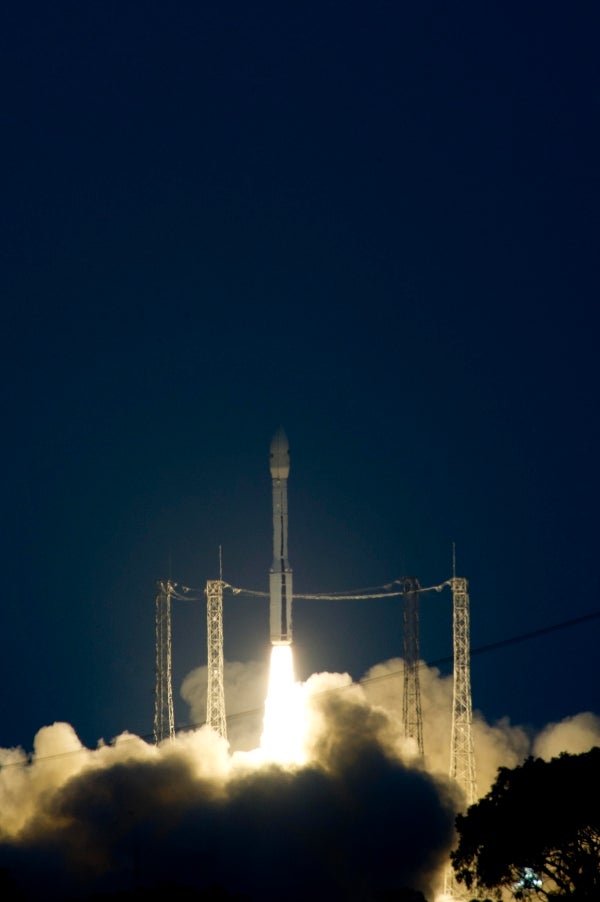
The European Space Agency (ESA) has successfully launched the new lightweight rocket Vega, carrying nine test payloads from the Kourou bases in French Guiana.

Discover B2B Marketing That Performs
Combine business intelligence and editorial excellence to reach engaged professionals across 36 leading media platforms.
The rocket took off at 7am local time (10am GMT) and completed the mission 70 minutes later, conducting a flawless qualification flight, ESA said.
ESA director general Jean-Jacques Dordain said that in little more than a few months, Europe has increased the numbers of rockets it operates from one to three.
"It is a great day for ESA, its member states, particularly Italy where Vega was born, for European industry and for Arianespace," Dordain added.
Since 2003, the agency has spent some €700m ($930m) on the development of the four-stage rocket and expects to use up another €300m ($399m) on its first five flights.

US Tariffs are shifting - will you react or anticipate?
Don’t let policy changes catch you off guard. Stay proactive with real-time data and expert analysis.
By GlobalDataThe 30m tall Vega has been designed to launch small satellites weighing less than 2.5t to complement Europe’s heavy-lift Ariane 5 rockets and the medium-class Soyuz rockets.
Europe now covers the full range of launch needs, from small science and Earth observation satellites to the larger missions, such as ESA’s supply freighters to the International Space Station.
According to the agency, Vega’s light launch capacity accommodates a wide range of satellites, from 300kg to 2,500kg, into a variety of orbits, from equatorial to Sun-synchronous.
The launcher is a four-stage rocket, which means that its first three segments burn a solid fuel, its fourth and final stage uses liquid propellants; it can be stopped and restarted a number of times to get a spacecraft into the right orbit.
Vega Satellite Launch Vehicle
The Vega (Vettore Europeo di Generazione Avanzata) is a new-generation launch vehicle being developed jointly by the Italian Space Agency (ASI) and the European Space Agency (ESA) for Arianespace.
For its first flight, Vega placed nine payloads in space, including a physics experiment to test Albert Einstein’s theory of general relativity.
The largest satellite carried by Vega during its maiden flight was the Laser Relativity Satellite (LARES) spacecraft, a 400kg satellite developed by the Italian space agency Asi.
Ejected at an altitude of 1,450 km and 55 minutes into the flight, the 37cm-diameter tungsten sphere will be used to make precise laser ranging measurements from Earth, using 92 reflectors on its surface.
The other eight much smaller satellites were released 15 minutes later, including the first ever spacecrafts from Poland, Romania and Hungary.
Vega now enters the Vega Research, Technology and Accompaniment (VERTA) programme, under which it will launch various science and technology missions.
The next flight is scheduled for early 2013, which will carry ESA’s Proba-V remote sensing satellite and several other supplementary payloads.
Other upcoming ESA missions under the programme are the ADM-Aeolus to monitor wind profiles, Lisa Pathfinder to test technologies for detecting gravity waves, and the Intermediate eXperimental Vehicle (IXV) for advanced re-entry technologies.
Caption: In the past nine years, ESA has spent about €700m ($930m) for the development of the four-stage rocket Vega. Image courtesy of ESA.



